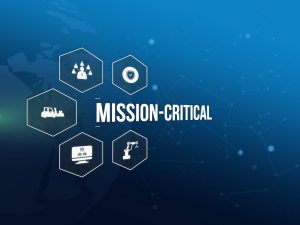Our March 2024 newsletter highlighted assessing operational areas and identifying critical functions, particularly those directly aligned with the university’s mission. For larger departments, this assessment often reveals a plethora of functions for ongoing operations. In this instance, plan managers should leverage span of control to refine and prioritize critical functions.
Span of control plays a pivotal role in emergency management, determining the optimal number of individuals or resources manageable under a single supervisor during any incident. Typically, a ratio of three to seven objectives for one functional area is considered ideal. Plan managers can apply the span of control concept to Mission Continuity plans by identifying and ranking three to five critical functions. Refining and prioritizing our critical functions helps the institution navigate various situations with efficiency and precision, ensuring the seamless continuation of our university’s mission.
What to Document
 After plan managers have identified and refined their critical functions following span of control, the subsequent phase involves documenting vital operational details. Effective documentation should include a description, peak periods, documents, dependencies, consequences, how to cope, and associated action Items. Capturing additional information serves not only to reinforce the retention of historical knowledge but also to ensure operational continuity. It enables departments to transcend individual dependencies and fosters a shared understanding across the university, aiding in the assessment of collective resource requirements and restoration priorities during incidents.
After plan managers have identified and refined their critical functions following span of control, the subsequent phase involves documenting vital operational details. Effective documentation should include a description, peak periods, documents, dependencies, consequences, how to cope, and associated action Items. Capturing additional information serves not only to reinforce the retention of historical knowledge but also to ensure operational continuity. It enables departments to transcend individual dependencies and fosters a shared understanding across the university, aiding in the assessment of collective resource requirements and restoration priorities during incidents.
- Description
- Provides a comprehensive overview of the critical function along with responsible personnel, where applicable.
- Peak Periods
- Identifies months of heightened activity crucial for accomplishing the function, facilitating better resource allocation and planning.
- Documents
- Enables uploading of important documents essential for executing the functions efficiently and ensures accessibility to authorized personnel only.
- Dependencies
- Highlights upstream and downstream dependencies crucial for the seamless operation of the critical function, excluding IT systems.
- Consequences
- Outlines potential harmful consequences if the function is not restored promptly following a disaster, emphasizing its criticality.
- How to Cope
- Offers brief insights on coping strategies post-disaster, encouraging proactive planning and resource management.
- Action Items
- Allows for the creation of actionable tasks, assignment to designated users, and setting due dates based on critical function assessments.
Levels of Criticality
Mission-critical business processes and functions are those that have the greatest impact on your department/units operations and potential for recovery. An important step of evaluating critical functions is determining sustainable down times by assigning levels of criticality.
- Critical 1
- Must be sustained at normal or increased service load, indispensable to life, health, and security.
- Critical 2
- Should be sustained if feasible, with grave consequences if paused completely, such as provision of care to at-risk outpatients or functioning of data networks.
- Critical 3
- May pause if necessary, but must resume within 30 days or sooner, encompassing activities like classroom instruction or research.
- Deferrable
- Can be paused and resumed when conditions permit, including elective surgeries or routine maintenance tasks.
By systematically analyzing critical functions and their respective criticality levels, we can proactively address potential disruptions, mitigate risks, and ensure continuity of operations even in adverse circumstances.
Resources for Plan Administrators


